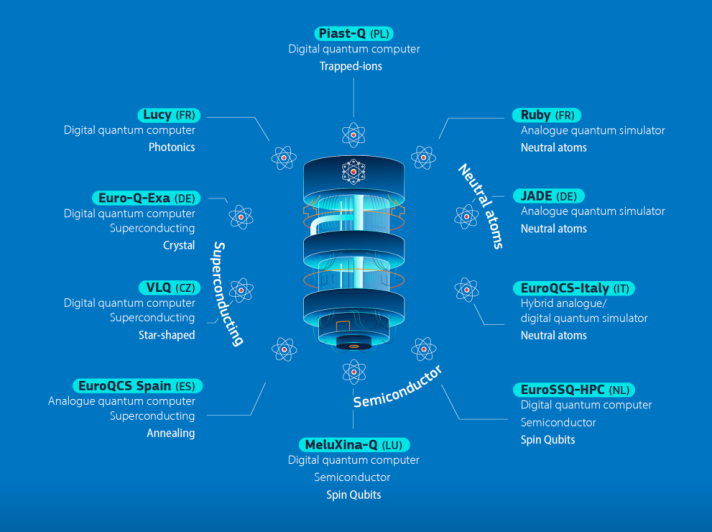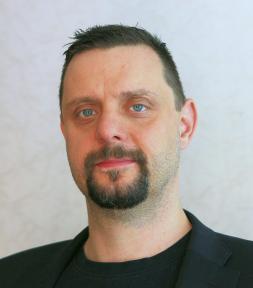The first computer using binary logic was invented in Europe in the late 1930s. The Z1, designed and constructed by Konrad Zuse in Berlin, laid the foundation for high-performance computing (HPC) for a century to come. Today’s most powerful computers still use this primitive binary logic of on/off, of zeros and ones and vice versa. Today, this simple logic is being augmented by a more efficient approach based on the laws of quantum mechanics.
The quantum mechanical world is often perceived as unruly and odd, and which certainly collides with everyday experience. In the quantum world nothing seems definite – even though it is based on probabilities, superposition and entanglement. A quantum computer provides a major advantage for computing by transcending the binary limitations of classical computing and will lift the limiting restrictions of a calculation based on either a zero or a one. A quantum computer follows quantum logic, where a superimposition of ones and zeros forms the basic information unit, and thus facilitates a leap in computational possibilities.
Quantum mechanics allows for new ways of solving certain types of problems which binary computing struggled to do quickly. This technology will therefore speed up problem solving which could be critical for advancing our society. Quantum computing is about to move from a laboratory environment to genuine data centre operations. The transformative potential of this new computing paradigm has already been demonstrated as proof-of-concept, and could, as the Draghi Report puts it be “the next trailblazing innovation in the computing field”.
Alongside quantum computing, artificial intelligence (AI) also constitutes a major technological advancement. It is invigorating that after a long and steady period of incremental progress in conventional computing, there are now two innovative and powerful approaches to computational modelling and simulation. Interestingly, AI and quantum computing can enhance each other and create a powerful feedback loop that could accelerate advancements in both fields.
Quantum AI, including quantum inspired AI, is a rapidly developing field, driven by its potential to recognise patterns both faster and more accurately than purely classical AI methods. In parallel, AI methods for enhancing quantum computing are becoming crucial tools for extracting maximum utility, as well as having the potential to shorten the waiting time for genuine quantum advantage.
Quantum AI is, like all quantum computing applications, still at the exploratory stage. For exploration to be possible, it is essential for end-users to have access to cutting-edge quantum hardware. Recognising the importance of quantum computing at an early stage, the EuroHPC Joint Undertaking has procured eight quantum computers to be integrated with HPC systems located in Germany, France, Poland, Czechia, Italy and Spain with two more systems coming in Luxembourg and the Netherlands.
From a quantum AI perspective, VLQ, the quantum computer of the LUMI-Q consortium located in Ostrava, Czechia and integrated with the EuroHPC JU supercomputer Karolina is especially exciting. Currently in the final stages of calibration, VLQ is based on a novel “star-shape” layout of the quantum processing unit, the QPU. This design is ideal for creating so-called entangled states. This design will, in the case of quantum AI, form the basis for outperforming purely classical methods.
The happy marriage of quantum and AI is further ensured by the EuroHPC JU AI Factories initiative. VLQ along with other EuroHPC experimental platforms such as EuroQCS-Spain, EuroQCS-Italy and MeluXina-Q, will provide world-leading HPC+AI+QC platforms for European end-users in both academia and industry. Through EuroHPC JU, the entire European R&D community can soon access quantum-enhanced AI applications. This has required long-term support to bring both the hardware and software for hybrid AI+QC computing infrastructure up to international speed.
As we celebrate the UNESCO International Year of Quantum Science and Technology, it is time to take quantum computing to the next level of utility. Looking to the future, Europe has a genuine opportunity to be world-leading, both in quantum for AI and AI for quantum.
In conclusion, Europe has the means and the talent, now it is just a matter of leveraging our collective will and continue to position Europe at the forefront of the quantum AI revolution!
About the Author
Dr Mikael Johansson is the Manager for Quantum Technologies at CSC, The Finnish IT Center for Science. In this role he oversees CSC’s participation in global initiatives related to quantum technologies, and in general explores and enables the uptake of quantum tech in RDI communities. He considers quantum-accelerated high-performance computing to be a central part of future supercomputing ecosystems. He spent twenty years in academia, studying and teaching quantum mechanical effects in (bio)chemistry. Dr Johansson holds an associate professorship in physical chemistry at the University of Helsinki, is director of the Finnish Quantum-Computing Infrastructure, co-founder of the Nordic-Estonian quantum computing infrastructure initiative NordIQuEst, and deputy director of the EuroHPC LUMI-Q quantum computing effort. He considers collaboration across the globe to be a highly synergistic endeavour, especially when it comes to quantum technologies.
Details
- Publication date
- 4 June 2025
- Author
- European High-Performance Computing Joint Undertaking


